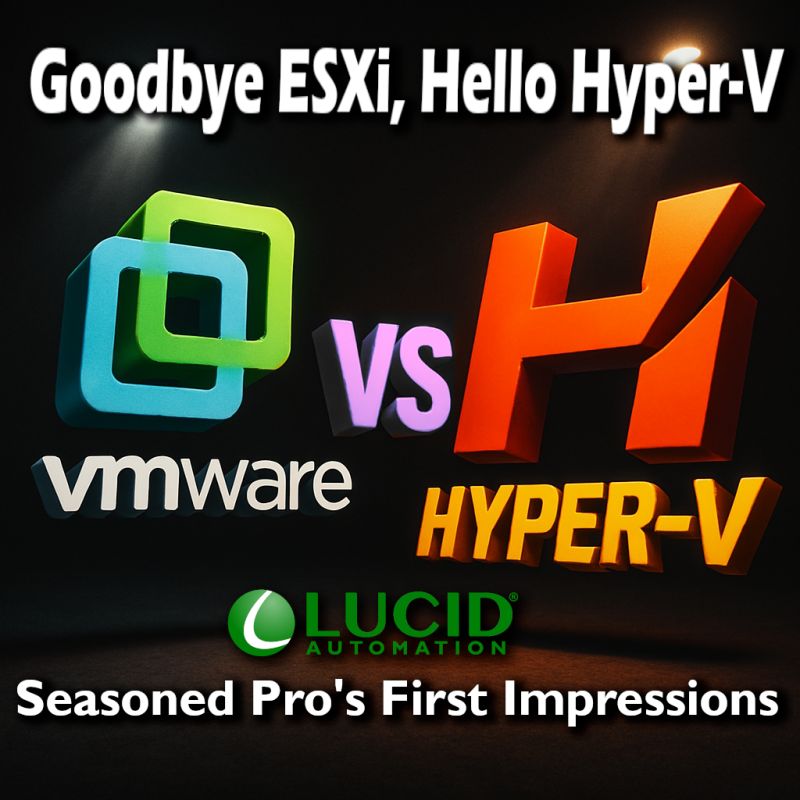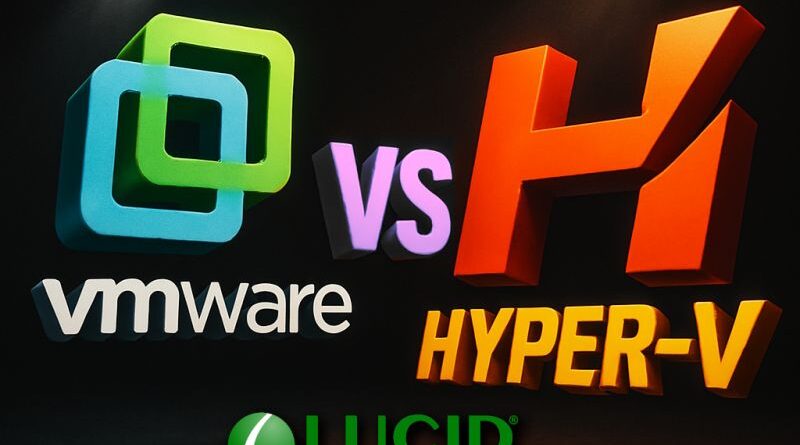VMWare ESXi vs Hyper-V

GMP Automation’s Creed: “This is my hypervisor. There are many like it, but this one is documented. My infrastructure is my life. Without me, it’s an automated chaos engine. Without it, I’m just a guy yelling at clouds…literally.”
We were forced to switch to Microsoft’s Hyper-V after more than a decade with VMware’s ESXi. Once Broadcom pulled Dell from reselling ESXi and our VMware account licenses disappeared during the migration, we had no choice.
Here are my initial thoughts on deploying our first 3-server Hyper-V project, from the perspective of a longtime ESXi user:
Setup: Installing Windows Server 2022 and enabling the Hyper-V role was ridiculously straightforward.
Licensing: The model is complicated. We ultimately took the easy way out and paid for Datacenter licenses so we could run as many VMs as the physical server could handle. (In fairness, I never fully understood VMware’s licensing tiers either, defaulting to the vSphere Enterprise Plus package.)
Management Interface: Hyper-V’s management console is extremely basic. Great for creating, powering on/off VMs, and taking “Checkpoints” (snapshots), but that’s about it. There’s no built-in host server performance monitoring per VM for CPU, memory, or disk usage. Google pointed me to third-party tools, I should have listened.
Failover Cluster: Setting up a failover cluster was also easy, but it uses a separate interface called “Failover Cluster Manager,” which confusingly overlaps with Hyper-V Manager for some operations.
My biggest beef was in tuning the machine. Figuring out if a VM was tripping out and pegging the CPU, or had under-allocated memory, or just general disk thrashing just seems missing. So I was stuck with guest resource monitor to figure out slowdowns. But there, some slow tasks you can’t isolate as a network issue, disk issue, or something else.
TLDR: Hyper-V gets the job done, and there’s plenty of online content to learn from. I don’t like it compared to the old ESXi, but likely not going back.. For clients, Hyper-V is our go-to for the foreseeable future.
Internally though, Proxmox is looking pretty good option to investigate right about now.
hashtag#Automation hashtag#Virtualization hashtag#LucidAutomation

